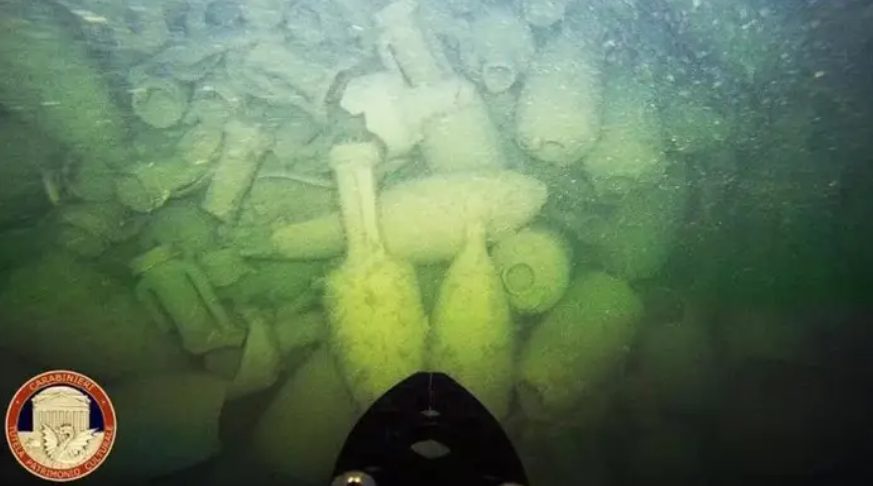Archaeologists are hailing the deep-water discovery of a 2,000-year-old Roman cargo vessel off the coast of Italy as ‘exceptional'.
The shipwreck was located near the historic town of Civitavecchia, some 50 miles north of Rome, on a sandy bottom in 160m, by the archaeology section of the Operations Department of the Carabinieri Command for the Proection of Cultural Heritage, who – in collaboration with the National Superintendance for Underwater Cultural Heritage of Taranto – scanned the area with an ROV.
A statement from the Carabinieri said: “The exceptional discovery is an important example of the shipwreck of a Roman ship facing the perils of the sea in an attempt to reach the coast, and bears witness to old maritime trading routes.”
The 20-metre-long cargo ship, which dates back to the second or first century BC, is filled with hundreds of Roman terrracota amphorae, and there are suggestions the vessel could have been enroute from Spain, carrying olive oil, olives, figs, peaches and wine.
Close to the wreck were two Roman metal anchor stocks.
All necessary steps are now being taken to safeguard and protect the important archaeological site.
Photo credit: Carabinieri Tutela Patrimonio Culturale
‘Perfectly preserved' glassware recovered from Roman shipwreck
Roman shipwrecks appear to be a hot topic at the moment, with the news that thousands of pieces of glassware in fantastic condition have been recovered from a 2,000-year-old wreck lying in more than 350m between Italy and France.
The Capo Corso 2, as it is known, is located between France's Cap Corso peninsula and Italy's Capraia Island, and archaeologists from both countries teamed up for this latest exploration of the wreck in July.
The cargo ship was discovered way back in 2012 by engineer Guido Gay, and subsequent archaeological projects were completed in 2013 and 2015. On this latest expedition, researchers used an ROV called Arthur to bring up artefacts from the wreck, including the glassware, two bronze basins, and amphorae.
Archaeologists estimate the wreck dates back to the end of the first century or the beginning of the second century BC. They hope to learn more information about its age through additional study of the recovered artefacts.








